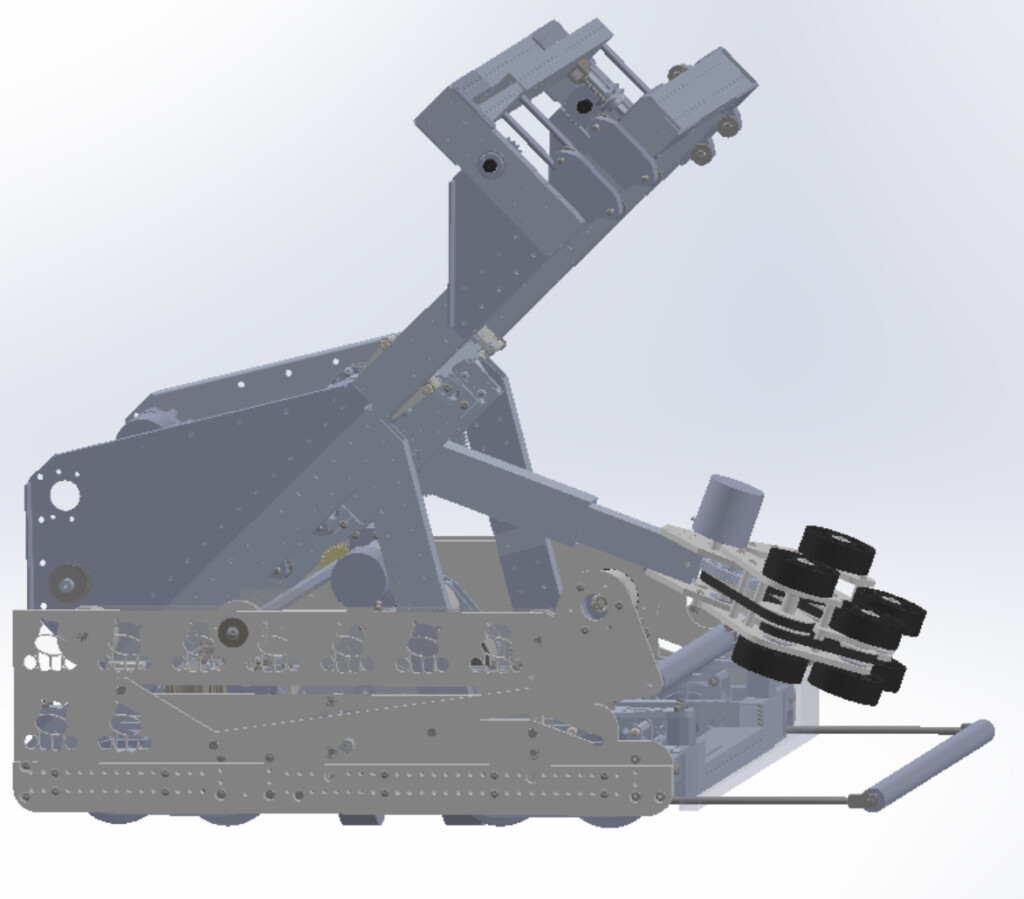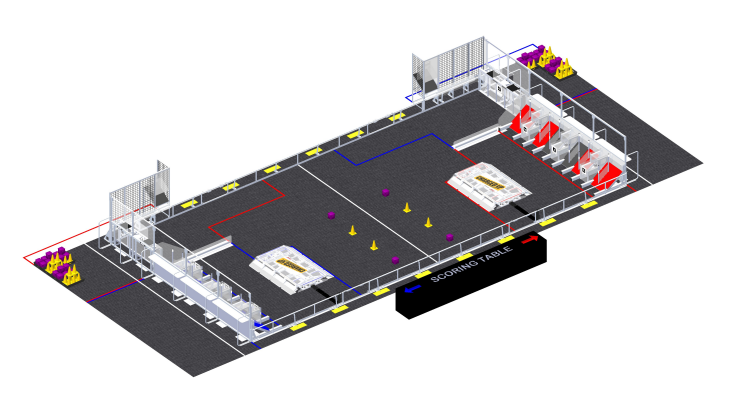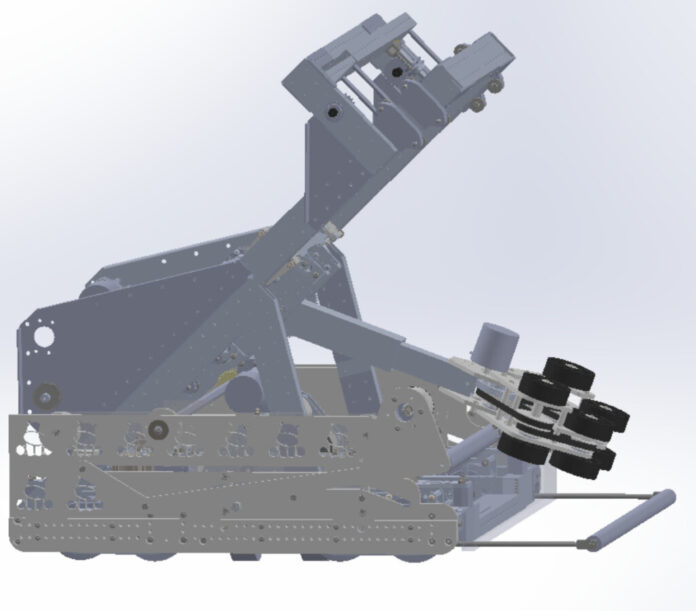
Since the beginning of January, the Jesuit FRC robotics team has been preparing for the upcoming “Charged Up” FRC competition.
The sound of whirring motors and clanking metal echoes through the workshop as the Jesuit robotics team furiously work to perfect their robot for the upcoming competition. Months of brainstorming, designing, building, and programming have led up to this moment. The team has poured their hearts and souls into their creation. Each member has played a crucial role, from the builders who crafted the robot’s frame and components, to the design team who designed and made the entire robot. The team has faced countless challenges and setbacks along the way. There were times when the design wouldn’t work as intended, and parts had to be remade and reinstalled. But the team persisted, working long hours and putting in extra time on weekends to make sure everything was perfect. As the competition draws near, the team is filled with a mix of excitement and nerves. They know they’ve put in the hard work and are confident in their robot’s abilities.
Joseph Amador ’23 notes: “Due to COVID, last year was my first year really participating in the Jesuit Robotics team. During the competition season, the code I wrote was plagued by bugs, the drive base had two poorly built gearboxes, and our intake was unreliable. However, despite these setbacks, our team was still able to go to the Texas state FRC tournament. I believe that we were only able to get so far into the tournament because of our interactions with other, more experienced, FRC teams. Being able to see robots that were designed by Nasa Engineers and even competing on the same field as said robot and co-holding the World Record for most points, instilled in the team a drive to improve our own skills and robot in order to rival these top-tier teams. This team spirit and drive for developing our skills, fanned by the scourge of the Cistercian team-winning worlds, continue on to the current season. Already, we are in much better shape than last year, thanks to our continued effort throughout the offseason and summer. We expanded our goals for the season to ensure our competitive viability, designed and assembled a perfect drive base, and have almost finished the CAD for our entire robot. This year, I expect that the experiences and skills of all of the members of our team will culminate in us earning a spot at the FRC world’s tournament.”
Sai Gujjarlapudi ’23 also states: “So we’re going in with the hope of getting to the world championship for the first time in five years. I think we have a chance, but it’s gonna take a lot more work. All we can do is work harder than we ever have and play the game right. I’m looking forward to my senior year finale.”
The Competition
Playing Field:

Teams will compete in retro video game-inspired arenas. The robots were required to collect “power cubes” and place them in specific locations on the playing field, all while trying to prevent their opponents from doing the same.
In this game, two alliances of three teams each compete to score cubes and cones into their grid to charge up their community. The alliances earn additional points if their robots are docked (parked) to or engaged with their charge station. Robots start each match in their community and may be preloaded with either one cube or one cone. Each alliance may choose where to stage four additional game pieces.
During the first fifteen seconds of the match, robots are autonomous. Without guidance from their drivers and running by code, robots score preloaded game pieces, collect and score additional game pieces, and are docked to or engaged with their charge station. During the remaining two minutes and fifteen seconds, drivers control their robots. Robots continue to collect cubes and cones from human players at their substations to deliver power to the grids in their community. Each community contains three grids.
The center grid is the Coopetition grid. A link is a line of 3 Game Pieces scored on the same row. Completing enough links earns the alliance a sustainability bonus. If each alliance scores at least 3 game pieces in the Coopetition grid, the sustainability bonus threshold is lowered for both alliances. Robots are protected within their community and loading zones. As time runs out, robots race to their charge stations. Alliances earn points for each robot docked to or engaged with the charge station. Earning enough charge station points earns the alliance an activation bonus. The alliance that earns the most points wins the match!
The competition is fierce, with 600 teams from around the globe competing for the top prize. The teams were judged not only on their robots’ performance, but also on their innovation, design, and teamwork skills. The winners of the 2021 competition were Team 254, “The Cheesy Poofs,” from Bellarmine College Preparatory in San Jose, California. This is the team’s seventh win in the competition’s 31-year history. They were followed closely by Team 1114, “Simbotics,” from Governor Simcoe Secondary School in St. Catharines, Ontario, Canada, and Team 118, “The Robonauts,” from Clear Creek Independent School District in League City, Texas.
We hope to compete with all of these amazing teams this season and we look forward to having a great competition. Stay tuned to The Roundup for more Robotics coverage!






